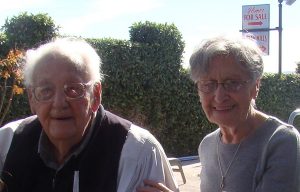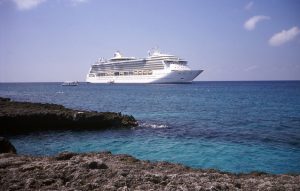Good friends embark on the Camino de Santiago pilgrimage
5 min read
According to the Bible, James, the brother of John, were both the sons of Zebedee. It is believed that he was a key figure in the establishment of Christianity in the first century. He was one of the first believers and followers and after the death/resurrection of his cousin it is believed he became the head of the Jerusalem Church.
St. James was martyred by beheading in Jerusalem in approximately 44 A.D. Santiago is the Spanish version of the name James.
There is strong evidence that he and the Apostle Paul were at odds. The issue was whether the followers of Jesus were a sect of Judaism or as Paul believed a new religion. James finally capitulated.
According to Spanish legend, St. James had visited Spain and had preached for some time. He returned to Jerusalem upon seeing a vision of the Virgin Mary on the bank of the Ebro River.
There are two versions of the myth about how his body ended in Santiago, Spain. Version one (1) has his disciples shipping his body to the Iberian Peninsula to be buried in Santiago. A heavy storm hit the ship and the body was lost in the ocean, but it washed ashore undamaged but covered in scallops.
Version two (2) legend. St. James’ body was transported in a ship, piloted by an angel and was to be buried in Santiago. A wedding was taking place on shore. A storm arose and the groom and a horse plunged into the seas. Miraculously they brought the body to shore covered with seashells.
Which brings me to a clarification for this article. It is about “The Camino de Santiago,” aka known by the English name, WAY OF St. JAMES, St. JAMES WAY, St. JAMES PATH, St. JAMES TRAIL, ROUTE of SANTIAGO de COMPOSTELA, and ROAD to SANTIAGO.
“These are the names of the various pilgrimages – on which a plenary indulgence could be earned – from ancient times.”
The various pilgrimages to Santiago has never ceased since the discovery of St. James’ remains.
The main pilgrimage route follows an earlier Roman Empire trade route. It then continues to the Atlantic coast of Galicia at Cape Finisterie.
A major symbol, known as the Shell of Saint James is a “scallop shell.” Over the centuries the scallop shell has taken on mythical, metaphorical and practical meanings. It is a major souvenir for pilgrims.
The scallop shell also has a practical purpose for pilgrims. It is the right size for gathering water to drink or for eating out of a bowl. Almost as significant is the walking staff used by pilgrims. There is often a crosspiece close to the top.
The terminus of pilgrims is the Cathedral of Santiago de Compostela in the main square of Compostela where they pay homage to St. James. Traditionally the pilgrims place their hands on the pillar just inside the door of the Cathedral.
By the way, the name Compostela means “field of stars.”
Rudy Ramirez and Dan Young are good friends. They are members of the same church and the same Bible study group. Rudy is 57 years old and Dan is 66. Both are retired. This article is about their pilgrimage.
In 2016 Dan told Rudy about his plans to hike 500 miles from St. Jean Pied de Port, France (1470 population) to Santiago, Spain. Rudy responded with enthusiasm. Extensive preparation, including research began.
Rudy, recovering from knee surgery, began a hiking regimen. Slow and short distances at first. Then, up to 8-10 miles a hike.
Then came “Shove off Day;” May 15, 2017. They flew to Paris, France, then to Biarritz and took a car to St. Jean Pied de Port. With maps, and adequate clothing, they started the hike on May 19th. Wearing broad-brimmed hats and good hiking shoes and a back-pack, they climbed 4,700 ft. elevation through rain, wind and 33-degree temperature in five miles.
The first two days were pain filled. Dan developed foot blisters and Rudy came down with a severe case of dehydration. Fortunately, they both recovered within a few days. Twenty of the thirty-seven days, the nights were spent in what is called ALBERGUES. Very similar to hostels in other parts of the world, they are operated by Cathedrals, the government or private individuals that converted their homes into hotels. Pilgrims (Rudy and Dan) were fed good dinners, breakfasts and an orange for lunch.
They averaged between ten and fifteen miles hiking each day. Each used a pair of trekking poles and two sets of clothes; washing what they were wearing each evening. Each had a scallop shell attached to their backpacks.
Hundreds of pilgrims were on the trail. They spent most days on the trail walking alone. They looked after and supported each other through the tough times and celebrated the shared victories along the way. They hiked over the Pyrenees mountain (4,700 feet high) and through Pamplona; the home of running with the bulls. They missed them by thirteen days, (July 7-14.)
Both men received a Compostela, a certificate that says they completed the Camino, the pilgrim’s credential or pilgrim’s passport is given to the pilgrims at the beginning of the hike. They get it stamped everywhere they go on the hike, hostel, hotel, restaurants, bars, etc.
The pilgrim’s passport is what proves you actually walked the whole way. You show it at the pilgrim’s office at the end and then they give you your Compostela. They began each day with a prayer and daily devotional. A beautiful place in the forest or local Cathedral would be chosen for this important time. By the way, Santiago has a population of 98,000 residents.
The day ended with Mass at a local Cathedral. When they arrived in Santiago, additional family members greeted them. They all enjoyed a great dinner at Parador de Santiago de Compostela.
Rudy’s family, Anna, Shaun and Aaron joined them at the at the 400-mile point. Two days later Dan’s wife Leslee and son Andrew joined the group. Finally, when they entered the square in Santiago, Debra, (Rudy’s wife), Kellee and Mike (Dan’s daughter and son in-law), greeted the group with lots of long hugs and tears.
As luck would have it, Santiago was celebrating with bonfires all over the city, live local bands and food – a city wide party. What a celebration the town put on. All flew back to Paris for more celebration, and then to L.A and home again.
A never forgotten adventure for both men.
Amen. Selah. So be it.








